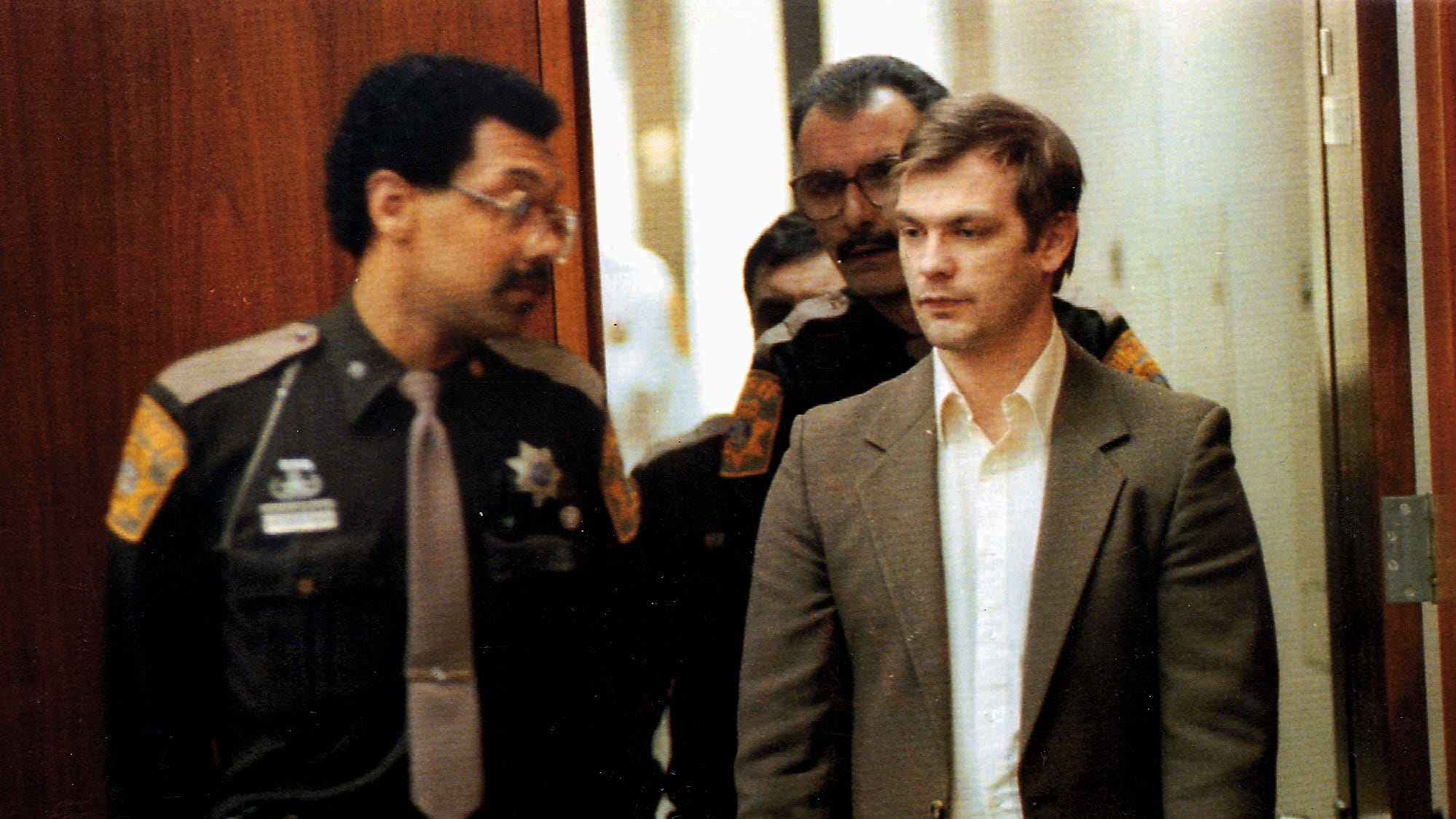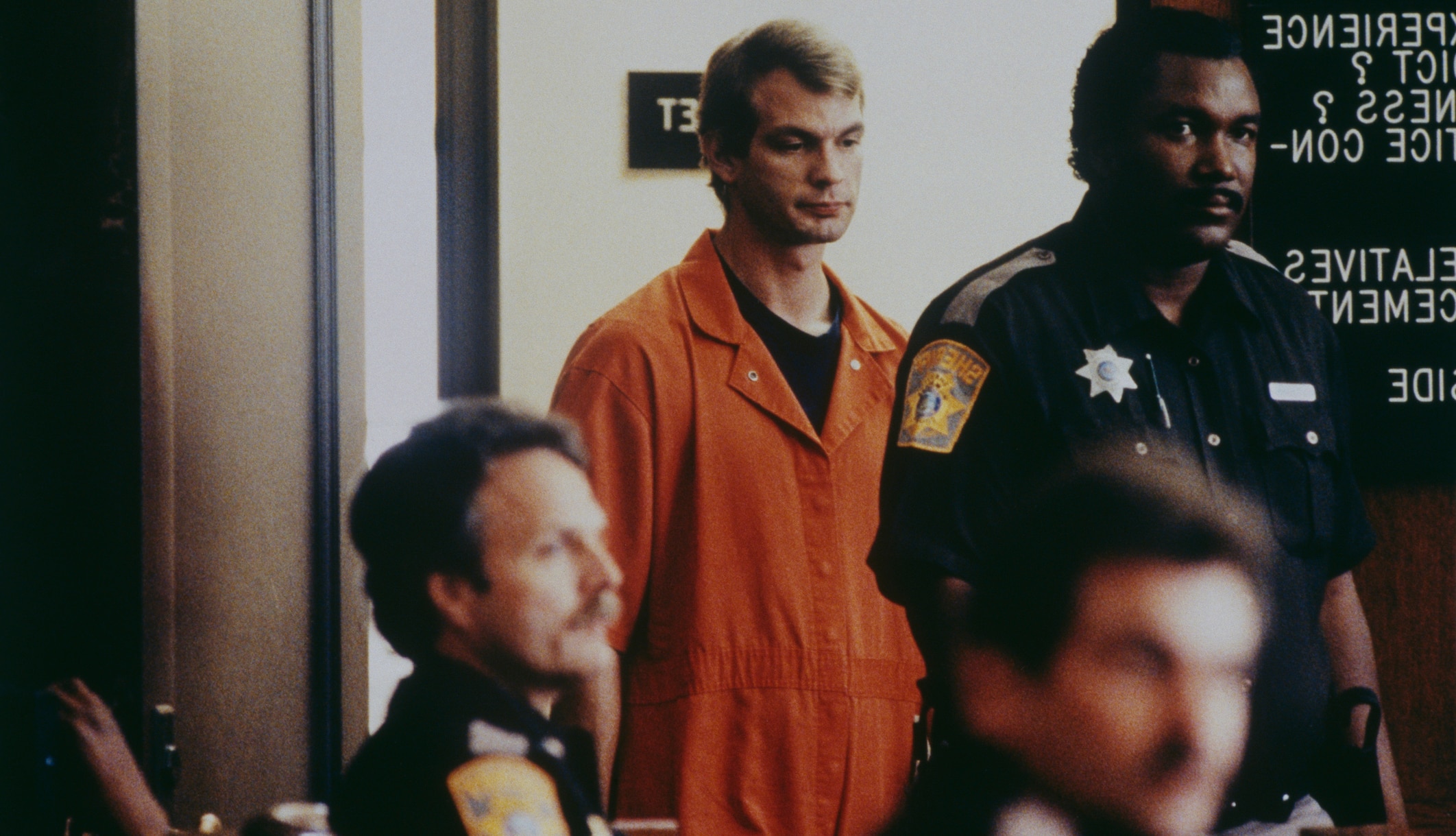Jeffrey Dahmer Crime Scene: The Chilling Details That Shook The World
There’s something deeply unsettling about the crimes of Jeffrey Dahmer, a name that sends shivers down the spine even decades later. The Jeffrey Dahmer crime scene is not just a story of horror; it’s a dark chapter in criminal history that continues to haunt us. From the twisted mind of a serial killer to the grim discoveries made by law enforcement, this case has left an indelible mark on true crime enthusiasts and society as a whole. So, buckle up, because we’re diving deep into the chilling details that will make your skin crawl.
Imagine walking into a house where the walls whisper secrets of unimaginable horrors. That’s exactly what investigators encountered when they entered Dahmer’s apartment in Milwaukee. The Jeffrey Dahmer crime scene was unlike anything they had ever seen. It wasn’t just about finding victims—it was about uncovering the grotesque methods used by a man who turned his home into a macabre playground.
This story isn’t just about the crime itself; it’s about the failure of the system, the psychological profile of a monster, and the human cost of such atrocities. Let’s peel back the layers and explore what really happened inside those four walls. Trust me, it’s gonna get heavy, but it’s also incredibly important to understand why we need to keep talking about cases like this.
Who Was Jeffrey Dahmer? A Brief Biography
Before we dive into the crime scene, let’s take a moment to understand the man behind the madness. Jeffrey Lionel Dahmer, born on May 21, 1960, in Milwaukee, Wisconsin, wasn’t always the monster we know today. Or was he? Growing up, Dahmer seemed like any other kid, albeit a bit socially awkward. But beneath that surface lay a darkness that would eventually consume him—and many others.
Here’s a quick rundown of Dahmer’s life before he became infamous:
| Born | May 21, 1960 |
|---|---|
| Place of Birth | Milwaukee, Wisconsin |
| Occupation | Factory Worker |
| First Arrest | 1978 |
| Death | November 28, 1994 |
| Known For | Being one of the most notorious serial killers in history |
But here’s the thing—Dahmer didn’t wake up one day and decide to become a serial killer. His descent into darkness began early, with reports of him dissecting animals as a teenager. By the time he reached adulthood, his fascination with death and control had escalated to unimaginable levels. And that brings us to the crime scene…
The Crime Scene: What Investigators Found
When police entered Dahmer’s apartment on July 22, 1991, they were not prepared for what awaited them. The Jeffrey Dahmer crime scene was a nightmare brought to life. The apartment was filled with evidence of his horrifying crimes—body parts preserved in acid, skulls lined up on shelves, and Polaroid photos capturing his victims in their final moments.
Let’s break it down:
- Body parts stored in the refrigerator
- Heads and torsos floating in vats of acid
- Polaroids documenting his victims
- A makeshift altar where he performed twisted rituals
It’s hard to wrap your head around the fact that all of this was happening in plain sight, yet no one suspected a thing. Dahmer was meticulous in his planning, ensuring that his crimes remained hidden until the very end.
Why Did He Do It? Understanding Dahmer’s Motives
One of the most haunting questions surrounding the Jeffrey Dahmer crime scene is why. What drove this man to commit such heinous acts? Was it a psychological disorder, or was he simply born evil? Experts have debated this topic for years, but one thing is clear—Dahmer’s motives were deeply rooted in his obsession with control and power.
Here are some key insights into his psyche:
- He wanted to create the "perfect lover" by controlling his victims completely.
- His fascination with death stemmed from childhood trauma and isolation.
- He saw himself as an artist, using human bodies as his canvas.
It’s a chilling reminder that sometimes the monsters among us aren’t born—they’re made.
The Role of Law Enforcement: Failure or Oversight?
One of the most controversial aspects of the Jeffrey Dahmer crime scene is the role of law enforcement. Critics argue that authorities had multiple opportunities to intervene but failed to act. For example:
- In 1988, Dahmer was arrested for molesting a 13-year-old boy, yet he was released after only serving one year in prison.
- Multiple witnesses reported seeing suspicious activity around Dahmer’s apartment, but their concerns were dismissed.
This raises important questions about accountability and the justice system. Could the murders have been prevented if law enforcement had taken these reports more seriously? It’s a question that lingers long after the case was closed.
The Impact on Victims and Families
While Dahmer’s crimes are shocking, we mustn’t forget the victims and their families. Each victim had a name, a story, and a life cut tragically short. The Jeffrey Dahmer crime scene wasn’t just about the killer—it was about the people he destroyed.
Here are some statistics that paint a grim picture:
- At least 17 victims were confirmed, though the actual number may be higher.
- Most of Dahmer’s victims were young men, many of whom were part of marginalized communities.
- The trauma inflicted on families and friends continues to this day.
It’s crucial to remember that behind every headline and statistic is a person whose life mattered.
How the Media Covered the Case
The media played a significant role in shaping public perception of the Jeffrey Dahmer crime scene. From sensationalized headlines to graphic images, the coverage was often criticized for being exploitative. However, it also brought much-needed attention to the case, leading to increased awareness and discussion about mental health and criminal justice reform.
Some key moments in media coverage include:
- Live broadcasts of Dahmer’s trial, which captivated audiences worldwide.
- Documentaries and books that delved deeper into his psyche and motivations.
- Public debates about whether giving Dahmer a platform was ethical.
The way the media handles high-profile cases like this has lasting effects, influencing how we perceive crime and justice.
Psychological Profile: Inside the Mind of a Serial Killer
Understanding the mind of a serial killer is both fascinating and terrifying. In Dahmer’s case, psychologists identified several traits that contributed to his behavior:
- A deep sense of loneliness and social isolation.
- An inability to form meaningful relationships.
- A desire for control and dominance over others.
These factors, combined with early exposure to violence and trauma, created the perfect storm for someone like Dahmer. While we may never fully comprehend why he did what he did, studying his psychological profile helps us better understand the warning signs of such behavior.
Lessons Learned: Preventing Future Crimes
So, what can we learn from the Jeffrey Dahmer crime scene? For starters, it highlights the importance of mental health awareness and early intervention. If Dahmer’s issues had been addressed earlier, would the outcome have been different? Probably.
Additionally, it underscores the need for a more responsive and compassionate justice system. Victims shouldn’t have to fight for recognition or justice, and law enforcement must take all reports seriously.
The Legacy of Jeffrey Dahmer
Decades after his death, Dahmer’s legacy continues to loom large in the world of true crime. His case has inspired countless books, documentaries, and even a Netflix series. But beyond the entertainment value lies a sobering reminder of the darkness that exists within some individuals.
Here are some key takeaways from Dahmer’s legacy:
- It’s essential to address mental health issues before they escalate.
- We must hold law enforcement accountable for their actions—or lack thereof.
- Victims deserve justice, respect, and remembrance.
As we continue to study and discuss cases like this, we honor the memory of those who lost their lives and work toward a safer future.
Call to Action: Keep the Conversation Going
Now that you’ve learned about the Jeffrey Dahmer crime scene, it’s time to take action. Whether it’s sharing this article, leaving a comment, or engaging in discussions about mental health and criminal justice, your voice matters. Together, we can ensure that tragedies like this don’t go unnoticed or unaddressed.
And remember—while the details of Dahmer’s crimes are horrifying, they also serve as a powerful reminder of the resilience of the human spirit. Let’s use this knowledge to build a better, safer world for everyone.
Table of Contents
- Who Was Jeffrey Dahmer? A Brief Biography
- The Crime Scene: What Investigators Found
- Why Did He Do It? Understanding Dahmer’s Motives
- The Role of Law Enforcement: Failure or Oversight?
- The Impact on Victims and Families
- How the Media Covered the Case
- Psychological Profile: Inside the Mind of a Serial Killer
- Lessons Learned: Preventing Future Crimes
- The Legacy of Jeffrey Dahmer
- Call to Action: Keep the Conversation Going

Jeffrey Dahmer USA TODAY archive news stories of serial killer's case

Jeffrey Dahmer Crime Scene Pics

Jeffrey Dahmer Crime Scene Photos From Apartment Crime News